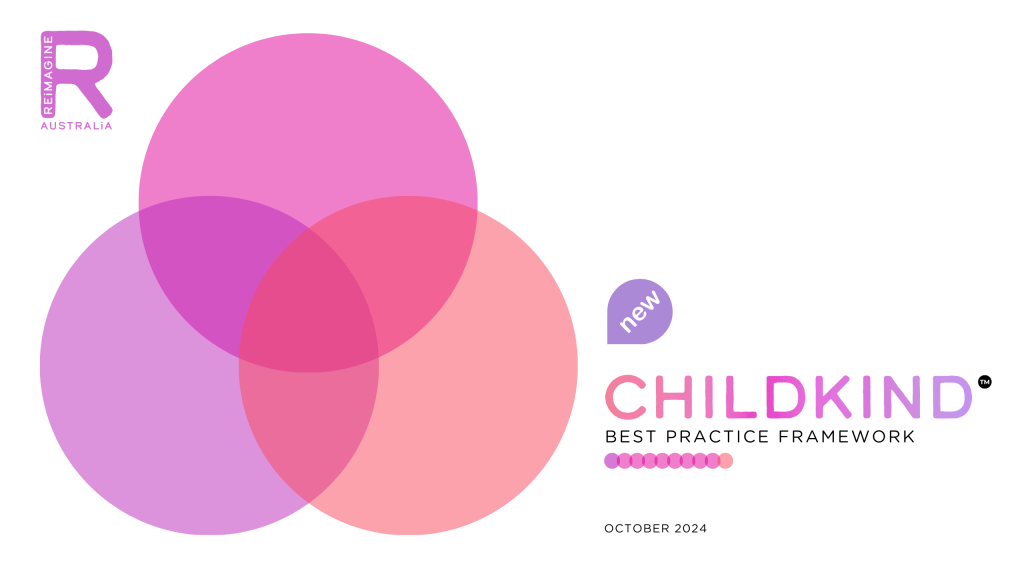CHILDKIND VALUE AND BEHAVIOUR 3
“I will exercise curiosity without judgment by seeking answers through asking questions in a sensitive manner.”
Exercising curiosity means being open to learning and understanding the unique experiences, perspectives, and needs of children and their families. For early childhood practitioners, it involves asking questions, exploring new approaches, and showing genuine interest in the lived experiences of children with disabilities or developmental differences. By exercising curiosity without judgment, practitioners can develop a deeper understanding of how to best support each child, fostering thoughtful decision-making that prioritises the child’s well-being. This behaviour helps create environments where children feel safe to express their individuality and encourages families to share their insights, contributing to more personalised, effective support.
Curiosity is a critical element of reflective practice and person-centred care in early childhood settings. According to Siraj-Blatchford et al. (2006), curiosity drives practitioners to continually learn and adapt their practices based on the evolving needs of children.
Australian research by Fleer and Ridgway (2014) found that curiosity in educators fosters deeper engagement with children’s lived experiences and developmental milestones, leading to more responsive and personalised care. This aligns with the Reimagine Australia Code of Ethics, specifically Principle 1.3, which encourages practitioners to seek out and value the diverse perspectives and lived experiences of children and their families. By exercising curiosity, early childhood practitioners are better equipped to tailor their approaches and supports to meet the unique needs of each child, ultimately improving developmental outcomes and fostering a more inclusive environment.
BEST PRACTICE PRINCIPLES, CHILDKIND WAYS OF WORKING AND KEY COMPETENCIES
This value or behaviour supports the Best Practices below:
This value or behaviour supports the Ways of Working below:
The value or behaviour suports the Key Competencies below:
Reflection questions are a valuable tool for practitioners, promoting self-awareness, critical thinking, continuous improvement, and stronger relationships in their work with children and families:
How do I stay curious and explore new approaches when faced with challenges in supporting a child’s development?
How do I remain open and curious about the unique needs and experiences of each child and family I work with?
In what ways can I improve my reflective practice to ensure that I’m continually learning and adapting?
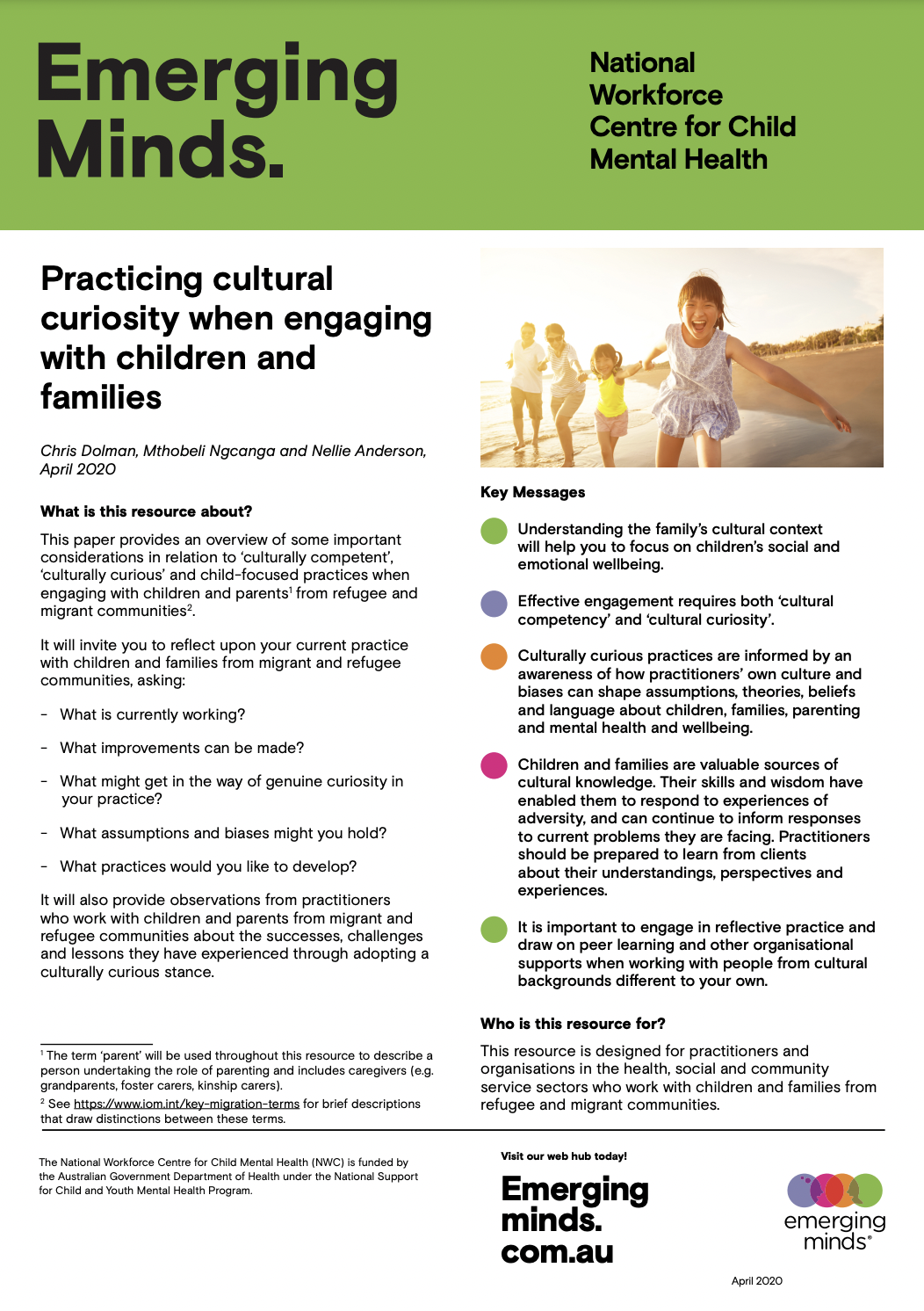
This paper, by Emerging Minds, provides an overview of some important considerations in relation to ‘culturally competent’, ‘culturally curious’ and child-focused practices when engaging with children and parents1 from refugee and migrant communities.
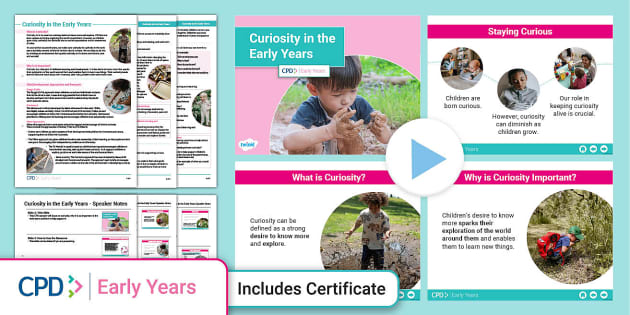
A helpful resource about Curiosity in the Early Years. This PowerPoint pack includes information on curiosity, as well as questions to help you reflect on your own practice whether you work in a team or independently.
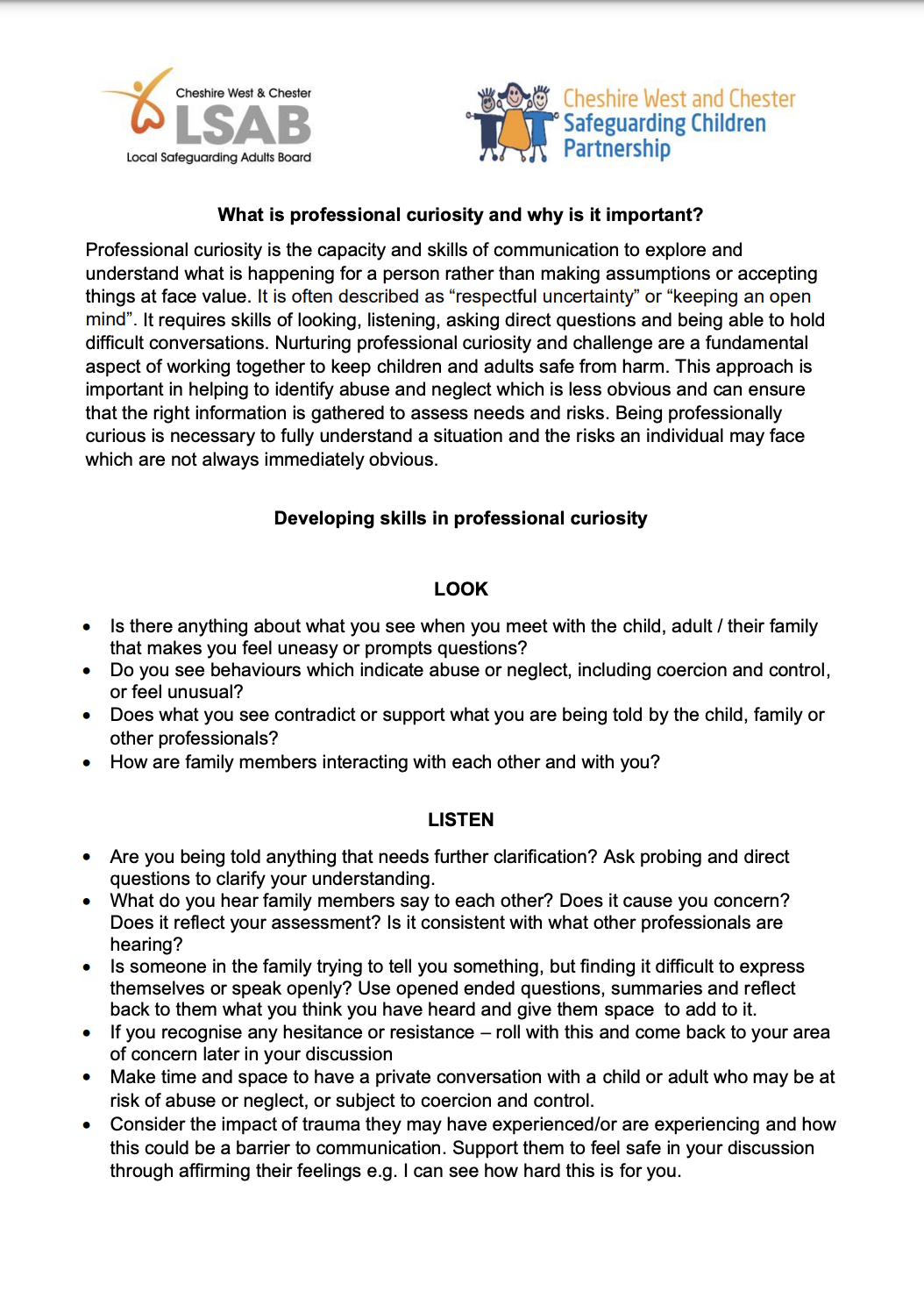
A helpful resource from the Cheshire West and Chester Safeguarding Children Partnership.
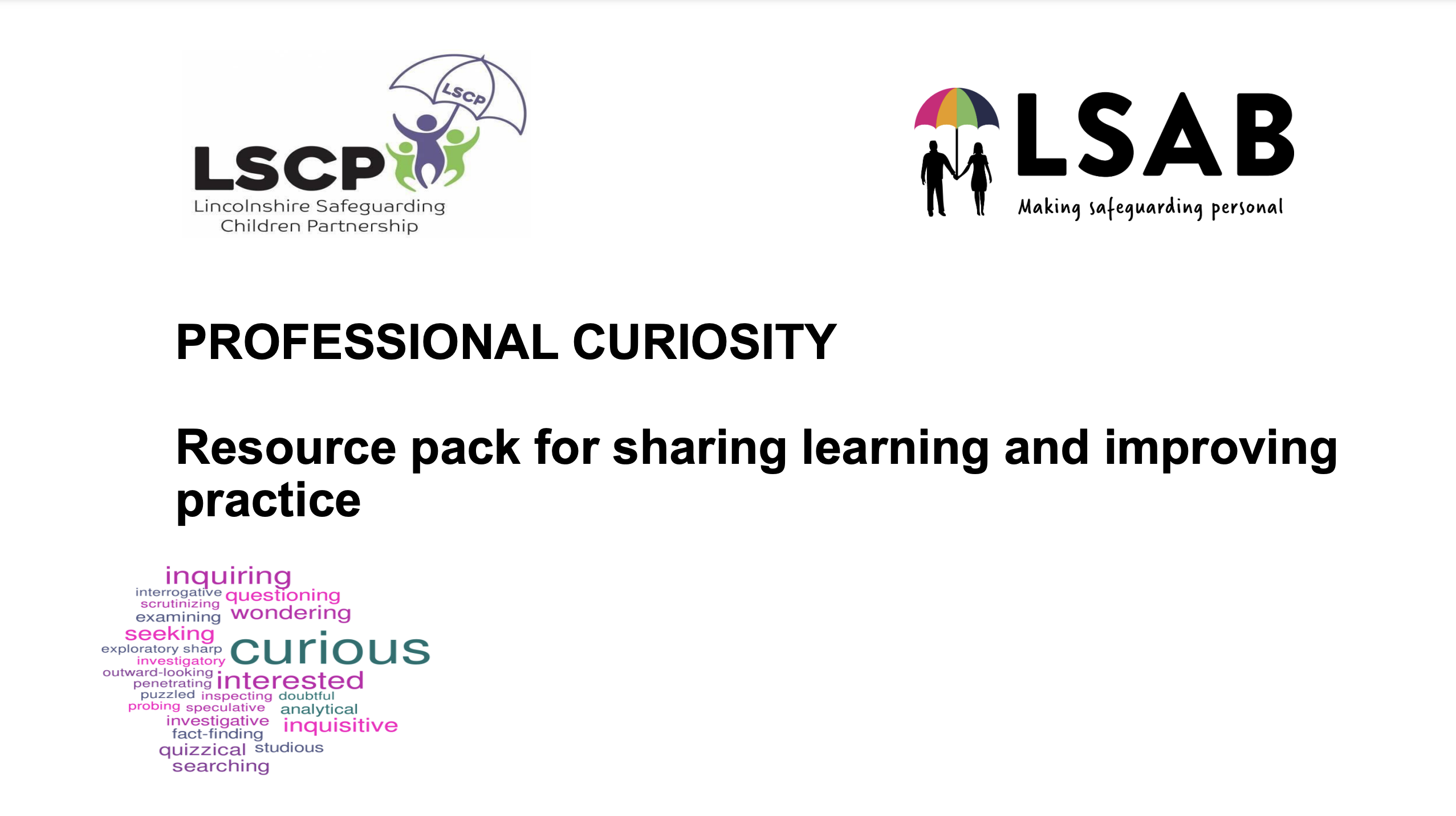
A helpful resource from Lincolcshire Safeguarding Adults Board.
The important thing is not to stop questioning. Curiosity has its own reason for existing.
Albert Einstein
Access more information on the ChildKind Best Practice Framework with its 10 Ways of Working, 30 Key Competencies and 8 supporting Values and Behaviours here:
